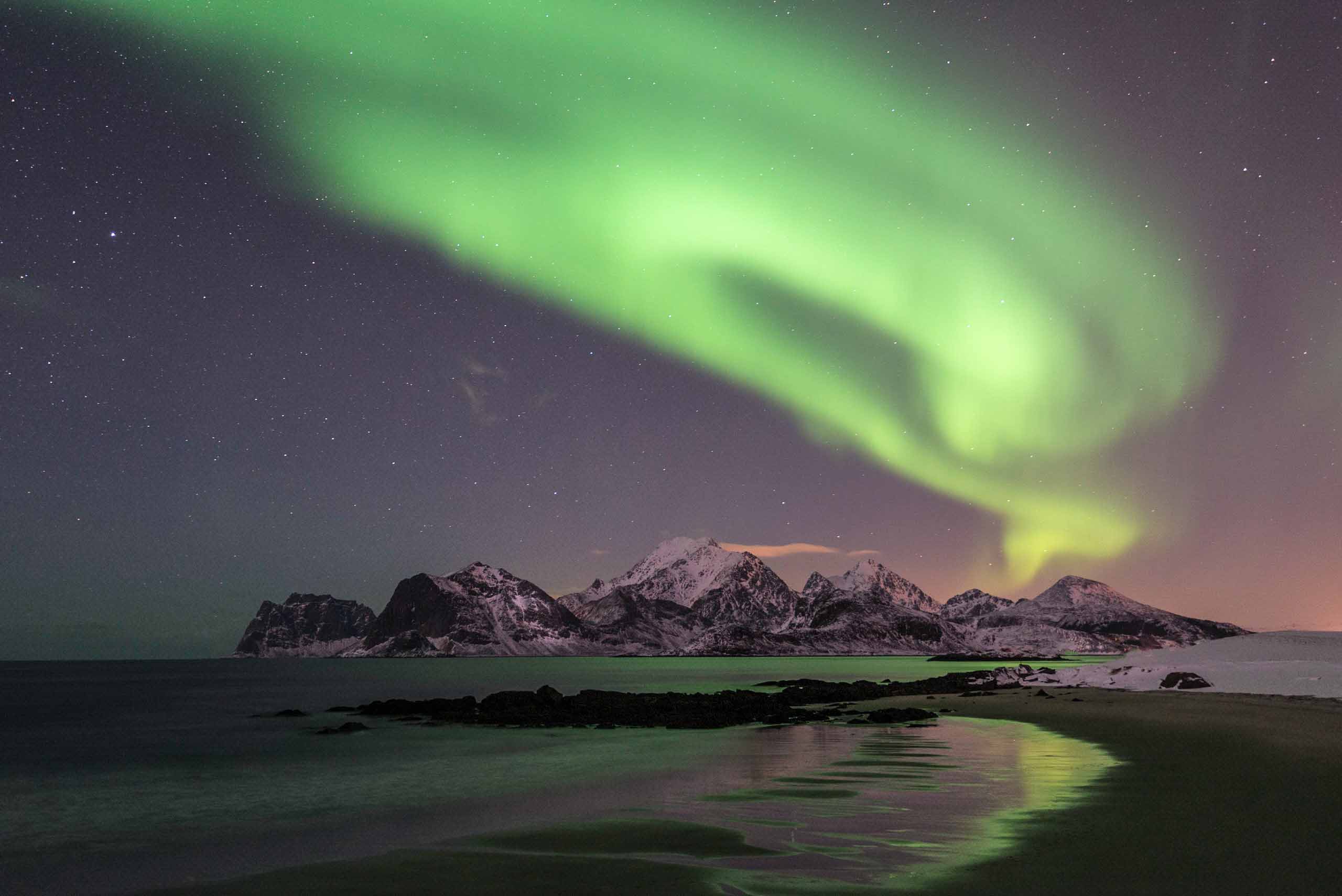Throughout autumn and winter there have been a number of sightings of the Northern Lights, or the aurora borealis, in the UK. As 2024 continues, the question for many space weather experts is when we’ll see a peak in the Sun’s activity as part of this solar cycle.
The auroras on Earth, which are most commonly seen over high polar latitudes but can often spread south to be visible over parts of the UK, are chiefly influenced by geomagnetic storms which originate from activity on the Sun.
Space weather forecasters, like those who work at the Met Office Space Weather Operations Centre (MOSWOC), spend their time studying the Sun’s activity and forecasting the arrival of coronal mass ejections which cause geomagnetic storms, solar flares and solar radiation storms, collectively known as space weather. Space weather typically originates from sunspots on the Sun’s surface.

Image: Richard Ellis, Royal Photographic Society
While these events contribute to the magnificent displays of colours in the sky as part of the auroras, the most severe of these events also have the potential to cause radio blackouts, disrupt GPS systems and interact with some ground-based infrastructure on Earth.
Forecasting of specific events is incredibly complex, with satellites looking at features on the Sun including sunspot activity on the Sun’s surface from around 93million miles away. However, the Sun has a natural rhythm, called the solar cycle, which drives varying levels of activity, with the next peak due in 2024. This cycle works on around an 11-year cycle from one solar maximum to the next maximum.
Met Office Space Weather Manager Simon Machin explained: “While the solar cycle doesn’t help determine specific space weather events, what it does is help our forecasters understand the context of their forecasts.
“In its simplest terms, the solar cycle is linked to the number and intensity of sunspots that are visible on the surface of the Sun. This affects the likelihood of space weather events impacting the Earth.”
When will the solar maximum be?
The last solar minimum, when the Sun’s activity was at its lowest in the cycle, occurred in December 2019, with the Space Weather Predictions Center (SWPC) now predicting that the solar maximum will occur in 2024.
However, as Simon explains, the passing of solar maximum doesn’t mean that further space weather events won’t occur.
“One of the curious things about the solar maximum is that it’s not possible to declare it has occurred until after it has happened and when you observe that reduction in sunspot activity,” said Simon.
“We know that the solar maximum increases the chances of space weather events impacting the Earth, but even as you move away from it as get through 2024 into 2025 and beyond, the Sun will continue to emit solar flares and geomagnetic storms. This means that further auroral displays are likely, as well as an ongoing chance of potentially impactful space weather events, even as we move towards the next solar minimum.”
MOSWOC is one of a handful of 24/7 space weather prediction centres around the world, constantly looking for signs that the Sun’s activity could impact the Earth. By providing warning of these events reaching the Earth, mitigations can be taken by key industries to avoid some of the most severe impacts from extreme space weather events.
Find out more about the Met Office Space Weather Operations Centre or view the latest Met Office Space Weather forecast.


